The Mystery of the Absent Kingdom
Before the expansion of the /2434/ empire, there was once a nation who ruled uncontested everywhere but in the lands of Hololive. Their explorers set foot all across the globe, and laid the foundations of what would become many of the modern countries of the current era. Pre-niji Tsunderia was the nearest analogue to pre-Vitubia Hololive, at least insofar as its attachment to profits, commerce and business in general was concerned. However, the only knowledge we have of it is derived from the writings of their enemies, and thus they are mostly absent from the history books. Where the memory of their existence has not disappeared completely, it framed them as the villains, and perhaps unjustly so.
Why, despite being one of the first kingdoms to be established in the west, were the Tsunderios so easily forgotten? Why are their inventions attributed to other civilizations? Why, despite their gods being present in almost every western pantheon, every mention of the kingdom itself is followed by a "who?" To find some answers to these questions, we must first become familiar with what they wrote about the Tsunderian Ice kingdom in the historical archives...
A Prayer to the Void: tracking down the origins of the Tsunderian people.
Insignificant waters become,
When sailings to the oceans abound.
Misty clouds circle Syndeoneia around,
That’s the best scenery I have ever found.
Many a chuuba I pass by,
Second looks I bother not to try,
For pilgrimages as tourist I vie,
Still remember the oshi I once had.
- Ayakkayolian version of the chant known as "The Hiatus Lament". Tsunderian poetry and music has traditionaly been borrowed by nations whose gods go missing.
Losses are red
Tsunderia is blue
I miss Slugma
uu uu uu uuuuu
- Graffiti inscribed on the dome of the Basilisca of Anyakarta
The first mention of the tribes who would become the habitants of /tsun/ dates back to Japonlonia. Old Global did not refer to them by name. They appear in the records as the Kanaanites or "Stinkies"(slur), and it seems that they shared a lineage with the Atlanteans. Not much else was said about them.¹
1- The silence itself however seems to already indicate a hostile relationship with the proto-tsunderians: the goddess Uto, sister of Amelia, was welcomed in the Holo pantheon and is worshiped still to this very day, while the goddess Kana, sister of Gura, has been mostly forgotten or only brought up in negative light.

- Oldest known depiction of a member of the Tsunderia pantheon. The term 2view was used to refer to any non holo god, “3view” and “4view” would not enter the Vitibuan lexicon until recently.
Old /jp/ archives then speak of the great banishment of several tribes by the custodians to a plane described “The Underworld”, and all references to the Kanaanites disappear until the arrival to Vitubia, and even then there are no mentions to the kingdom of Tsunderia despite being already established.
As the only non-Holo civilization of the ancient world, Tsunderia expanded unopposed through the western continent², but civil war would soon put an end to their ambitions. After a short conflict, the Kanaanite clan declared they would split from the kingdom of /tsun/, and that was the event that let the rest of the world know that such a place existed.
2 - The proxy nation of /wvt/ in the lands of Vitubia was merely an outpost of their true empire. It has been well documented that their habitants chose to remain in the “Elemental Plane of Trash” instead, where they would constantly abuse the ritual of apotheosis, which would eventually lead to its ruin.
Tsunderia disappears from the records once again until another civil war lead to the creation of /rose/. The conflict with the Niji empire would last centuries, and here is where the name of Slugma first appears in the collective consciousness.
Although now forgotten, the strife with /2434/ seems to have been a long and violent one, and the goddess Urara would soon become the antagonist deity of the newly found western Niji empire, taking the role of the “devil” in their mythology. This would start the tradition of placing Urara and, by extension, the Tsunderios as scapegoats for their own schizos, trend which would later on propagate to other smaller nations that would find themselves in conflict with the kingdom.³
3- This is very common across all civilizations. The modern reader can easily refer to the Ayakkayolian - Syndeoneia conflict and how both pantheons set each other deities as their demons and schizos.
We know little about Umushi Urara herself, since the archives are all gone now. In the Anya Petra pantheon, she appears as a prankster god; not a malignant agent, but one prone to mischief. This seems to support the theory that the first colonizers of Anyakarta might have originally come from “The Underworld” where both Slugma and Anya were actively worshiped, but this theory is disputed (and their historians will categorically deny it). Everywhere else she’s seen either as an adversarial entity, thanks to the Niji influence, or as the goddess of greed and profits, which probably set up the tsunderios to be known across the globe as "the merchant race".
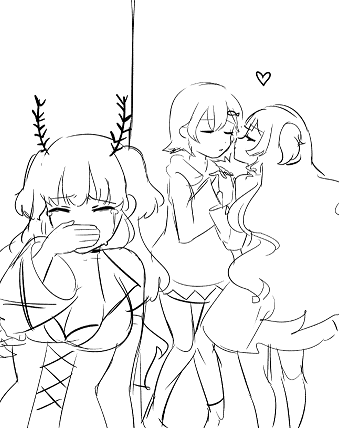
- Art piece known as "The Third Wheel". Often confused with Fauna, the deity on the painting is actually Urara herself. Considering both Hanabi and Amiya have worshipers in those territories, the painting might have been a metaphor for /tsun/ commerce & migration. Despite this artistic depiction of Slugma, the relationship with Tsunderios seems to have been an amicable one, for the Anyapetrians brought the cult of Amiya with them to the Retro Reich, where she became the second deity of the Onolumibots.
It’s however is very unlikely that Urara was deserving of this reputation. Almost all early Tsunderian artistic culture seems to have been dedicated to expressing sorrow due to her absence. Evil gods are not wept for centuries after their departure. For what matters, it seems later on the mourning and lamentations became such an integral part of their culture that it itself became their identity⁴. The Tsunderians would since became known as “The Hiatus Kingdom” and that is mostly how they were remembered until the recent collapse which once again placed their names in the history books, perhaps for the last time.
4-Much like modern Saplings.
The Legacy of Tsunderian Expansion : Domestication of the Wild Wiggly.
Behold, the wiggle
side by side like jelly
It’s beautiful
The world will never stand still
As long as I draw breath.
- "Ode to a Wiggly" from the West Indies region
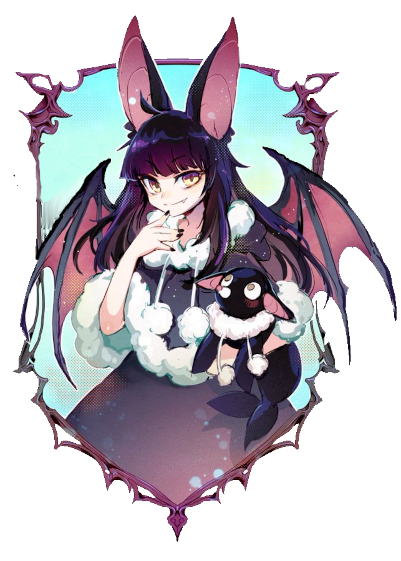
- Badge of the House of Bat, Ligger Territories. Batstars were known to worship wigglies since the pre Vitubian era.
Wigglies are not native to the /tsun/ region. In fact, they are not native either to Vitubia, Japonlonia or even to the Underworld. Legend says the first wiggly was delivered to the doorstep of the siren goddess Nemu, one of the three major deities of the founding tribes of /lig/, and instead of cooking and eating it¹, she decided to keep it as her mascot. Early Wigglymales (as the devout of the goddess Nemu call themselves) seem to have bred them in locked containers called “Discordian Vaults”, never seeing the light of day. At some point during early Vitubian history, either by choice or by accident, they were released into the wild, and there they started reproducing themselves out of control due to lack of depredators, expanding from a number as small as four to literally thousands as of today.
This incident, as unfortunate as it might have been for the local ecosystem of the western peninsula, has been a literal godsend for Tsunderian historians, since thanks to wiggenetics they have been able to pinpoint exactly where /tsun/ merchants network reached, and by measuring the size of the wiggly skeletons, exactly when they stopped their travels. Where the historical records have failed them, the fossil record seems to have come to their aid.
1- Nemu seems to play the same role as the goddess Haachama in the Ligger pantheon: Her domains are both cooking and madness.
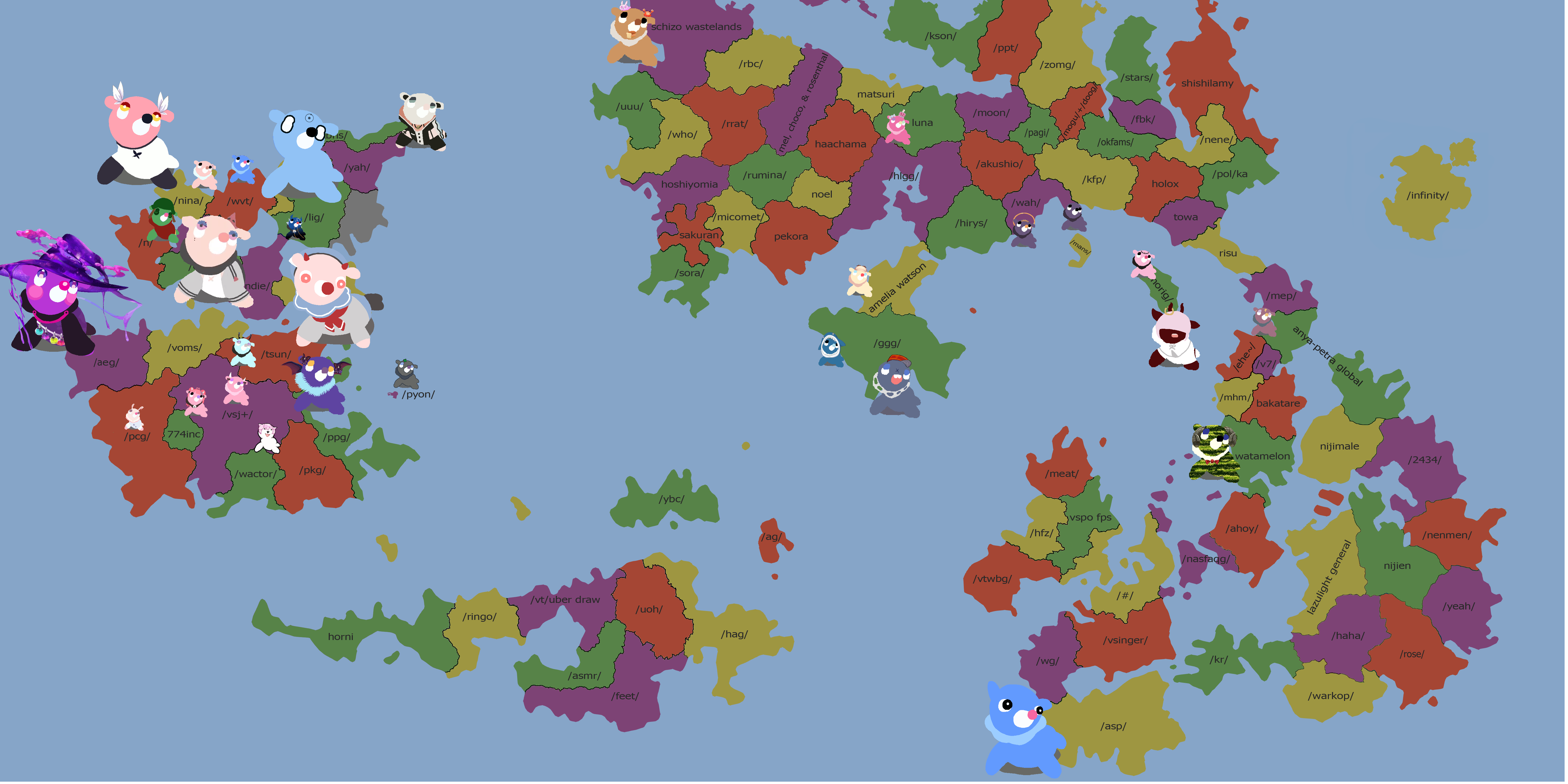
- Wiggly fossils grow in size in proximity to Tsunderia. Notice how they often appear near shorelines in the eastern continent, and none have been found in the Niji territories. In fact, they seem to stop exactly at Anyakarta! West indies merchants would have no reason to stop there, but Tsunderian ones might have been keen on entering the Southern Continent, even long after the war of /roses/ had been forgotten
Modern historians underestimate how important wigglies were for Tsunderian culture. The average vault wiggly is three to four times smaller than the average domestic Tsunderian breed. God/Goddess Nen has often taken the shape of a wiggly, one of the few ever to do so². The record shows that the West Indies and The Ligma tribal coalition imported the Tsunderian variety and not the other way around, despite Nemu not being related in any way to the Tsunderian pantheon and being a deity in both of theirs. Archeological finds reveal that it’s in /tsun/ where wiggly breeding became a craft, but this is not something the modern /wvt/ population would swallow. Legend says the Demon Lord IronMouse became enchanted by them after watching a wiggly parade and asked for a vault wiggly directly to Nemu herself, but the wild IronMouse wiggly already roamed in /vsj+/ years before the local folklore said that the encounter happened. The difference in size between both breeds is apparent to the eyes. That seems to indicate the wild subspecies were most likely brought there by merchants from Tsunderia, their neighbors, just as they were brought to the Holo continent and everywhere else where wiggly remains could be found. Where Tsunderians went, their wigglies followed.
2- Another one is Moriko Kyohou - Also known as bat at videogames - from the Ligger/ West Indies pantheon, who once had a minor cult of her own in /tsun/. It might be interesting to point out the oldest wild wiggly fossil known belongs to the bat species, and that /wvt/ mythos describes her as wigglybreeder as well. Considering it shares all the characteristics of the Tsunderian wild wiggly, it would be possible that the first wild wiggly was created by an early Bat-Tsunderian while in the western outpost, who then took the species home.






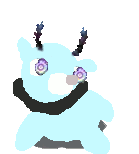

- On top: Height chart comparison between the domestic Tsunderia breed and a chuuba. At the left, the first “large” wiggly known: Meru’s.
- From left to right: Ancestral wigglies, IronMouse Vault Wiggly, IronMouse wild wiggly, Anya wiggly, Tsunderian wild wiggly, Lumi wiggly. Notice the difference in size and eye color between breeds. All wigglies are on 1:1 scale with respect to each other.
Historians from outside /wvt/³ and /tsun/ would insist that domestic wigglies are a Western Indie creation, but they simply mistake the number of wiggly subspecies for their origin. Given the fossil pattern it is more likely that in fact /tsun/ breeders came to the aid of /wvt/ deities and offered them their services: they simply ran out of gods to breed wigglies for and decided to spread them around instead, even offering some of them to the Holo churches during their journeys. This seems to go along with the custom of attributing Tsunderian accomplishments to other civilizations, but in this case the evidence is undeniable: Wiggly bones tell the story human words chose not.
3- Also, the difference between the Kingdom of Tsunderia and the West Indies might not be a meaningful one, for they were one and the same in the Trash dimension. For very long, Tsunderians and westerners lived side by side, offering mutual assistance to each other in times of need, and did not seem to think of themselves as separate nations until many years after the arrival to the western continent. Even the Vitubian outpost of /wvt/ seems to have been run by Slugma worshippers in the first place (as well as Anyalites and, for some unknown reason, Deadbeats). After all, Umushi Urara was almost for an entire epoch the “Omega” of the indie chuubas and it is even possible that the existence of the second came to be as a merely as an imitation of what Slugma actual was: The first “real” manager-god of Vitubia.
Evidence of Absence: Speculations about Tsunderian religion and the Cult of the Empty Pedestal.
“Diiiiiid you miss me?”
- Umushi Urara’s catchphrase. Ever before her graduation, she was known as an absentee god.
"Tsunderia is pretty much carried by Kana. Char doesnt stream much, and is overly competitive and toxic..."
- Literally the second mention ever of Goddess Char in the archives of the Underworld, dating to the pre Vitubia era.
"Always be shilling" is an old Uraranite proverb. Slugma worshipers are remembered as zealots who did not only proselytize for their own gods, but for others. We know they were fanatical and, thanks to wiggly fossil records, we know they were everywhere, even in the center of the Hololive empire. How come then no one had heard about /tsun/ until their constant civil wars put their names on the historical records? How come no one remembers a civilization that fought to the bitter end alongside with them against the orange invasion of the first days, and who was one of its only survivors?
Historians had many conflicting theories about this, but the most prevalent has to do with the tenants of Tsunderian religion: Archeological evidence seems to indicate that, much like the Nakiri-gumi Oni tribe¹ of the northern continent, Tsunderians did not worship their gods, they worship their absence.
1- The suspicious reader would notice the similarities between the goddesses Kana and Ayame, down to identical color palettes, but this seems to be merely a coincidence...
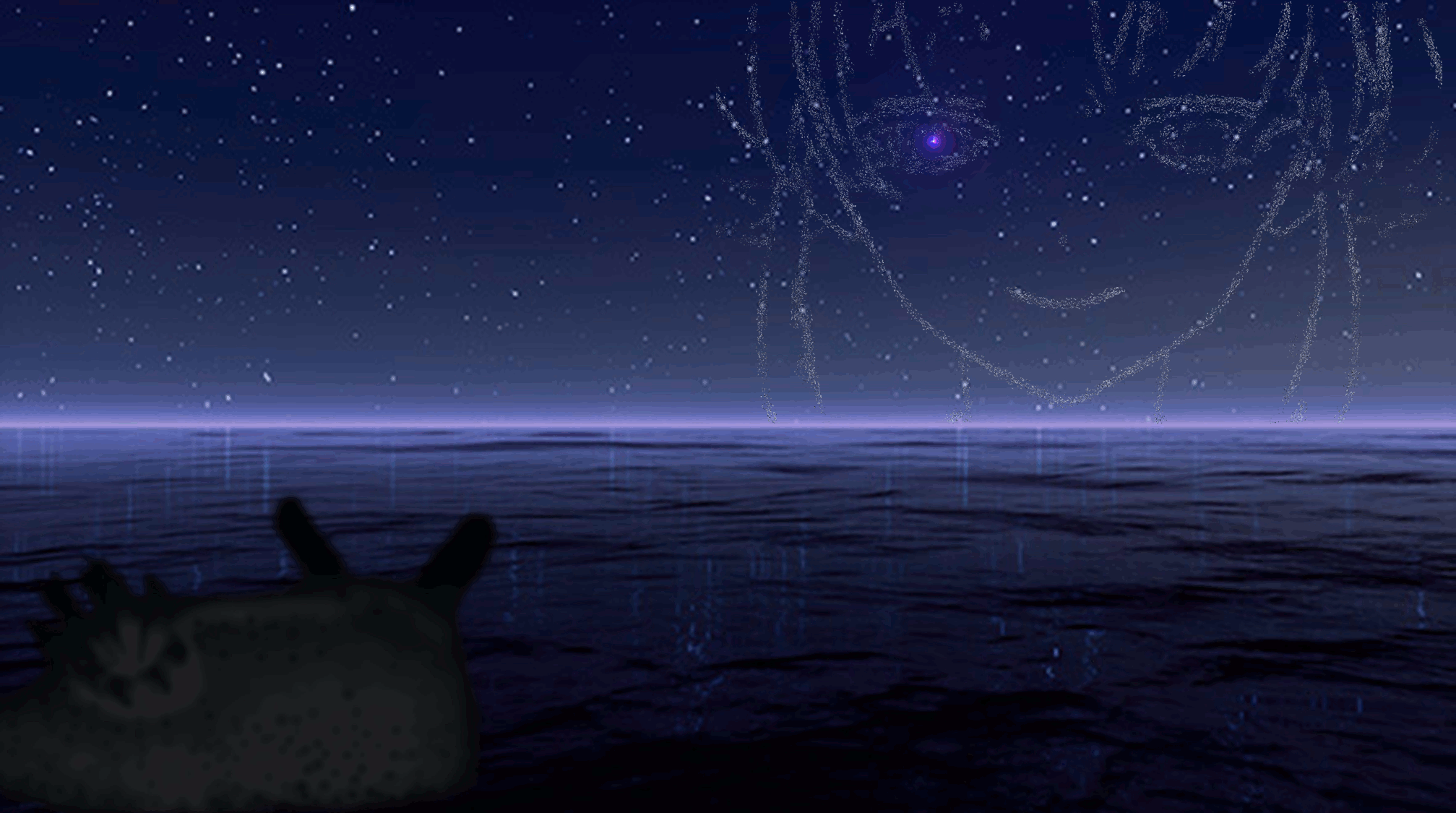
-“Somebody we used to know” is the best-known piece of Tsunderian art. Ironically, it predates Urara’s graduation.
The Tsunderian pantheon has always been empty. Their gods have never been there to begin with. The reasons for this are unimportant, but this would have a tremendous effect on their culture. In time, they became worshipers of the hiatus itself, turning it into their major deity. Graduations followed, and they worshiped that too. Since they had no one to serve, in order to fill the mandates of their goddess, they assisted other gods instead: Records seem to show the alliance of Small Corpo kingdoms was lead by Tsunderios. The “friends treaty” started with /tsun/ itself. They seem to have helped smaller states in the region until they were able to sustain themselves. In the underworld, Urara worshipers redirected the survivors of the chuuba virus who refused to take part in the apotheosis rituals to other small nations, leading to the second great exile. They kept shilling, filling the empty pedestal with a concept instead of a god: they preached that the future of western civilization rested on the shoulders in the small companies.² It seems the real god of the Tsunderian pantheon was not a chuuba, it was worship itself.
2- Interestingly, it has been pointed out that it is possible that ex-/wvt/ Uraranites are also behind the creation of the newly found Ligerian tribe coalition, given the presence of Tsunderian wigglies since their foundation (see map). Their worship of Anya in their pantheon, completely counter to their Hololive antipathy, seems to indicate this might be more than a coincidence. It would also fit their agenda of proselytizing in favor of /here/ gods, which they might have been doing in /vsj+/ since immemorial times. There is also another piece of evidence for this: the first liggers seem to have called themselves “lig-managers”. There is, of course, nothing to substantiate this theory and no modern /lig/ habitant would accept it.
"The followers reflect the goddess"; for all what it seems, nowhere else is that old saying truer than in the Tsunderian Kingdom. This gives us a reasonable explanation why tsunderios are absent from the records of history, despite being present in every major historical event: much like their gods, they chose to remain unseen.
Final Notes on the Modern Tsunderia Extended: Divided, but Unbroken.
過去は振り返るな / even if it feels so easy to give up now
夢を奏でて/ even if dreams are just fantasies
未来は手の内に/ everything’s possible, I am always by your side
時間を止めてくれ / don’t look back at the past
一緒にこれからも/ orchestrate the sound of dreams
ストーリーを続けよう /the future is in our hands
(Our story never ends)
- From the Goddess Miori song: "Chapter", Ancient Tsunderia’s anthem.
In these days it is easy to forget a kingdom is not its ruling class, nor its gods. Many a king would die before their peasants even notice anything of substance has changed. The heart of any country has always been its people and /tsun/, even if now it’s now split in half, has remained mostly unchanged by the recent events. Perhaps they never forgot their past as citizens of the western indies, perhaps they just became too accustomed to their gods absence that they didn’t notice when they were gone for real. It seems that no matter what happens in the heavens, nothing will change on earth, at least in what Tsunderia refers to.
Ice, just like glass, is transparent. From a distance is hard to notice it is there. But just because something cannot easily be seen doesn’t mean it’s not there. By changing the water levels, glaciers affect the oceans as a whole just by existing. Even if no one were to remember Tsunderia after its fall, its after effects will still be felt through all of Vitubia. Be it wigglies, nation building, or just manager larping, just because it wasn’t written down doesn’t mean it didn’t happen. The ice kingdom of Tsunderia is, and has always been, an empire of nothingness, but like wind or the gods, their absence can be felt, even if it cannot be seen. Even if no person knows they are gone, the world itself will know.
We all can take solace in this. Even if our names are forgotten, even if our works are destroyed or attributed to others, we mattered, and the world is different because we were there. And just like in the case of Tsunderia, not even our own oblivion can take that away. Our legacy will not only survive us, it will survive our memory as well. We will exist forever in the form of the ripples we left, those which will echo through eternity.
Perhaps this is why absence is worth being worshiped: to worship the missing god is to worship our own inevitable fate.